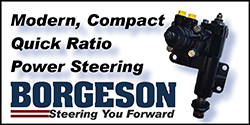Bill Crowell
Well-Known Member
I'd like to drill and tap several of these holes. I've got my 25/64" drill bit for the tap, but I don't know what kind of tap to buy. Some of the types I've seen are "chip-free thread-forming", "spiral flute", "spiral point" and "straight flute".
I was thinking of buying the "spiral flute" type because that kind seems to be recommended for tapping, but what is the deal with the "chip-free thread forming" type? Is it preferable to the spiral flute type for tapping threads like this?
Can I do this threading with a hand tap, or am I going to have to buy a tapping head for my drill press?
Thanks in advance for any replies and opinions.
I was thinking of buying the "spiral flute" type because that kind seems to be recommended for tapping, but what is the deal with the "chip-free thread forming" type? Is it preferable to the spiral flute type for tapping threads like this?
Can I do this threading with a hand tap, or am I going to have to buy a tapping head for my drill press?
Thanks in advance for any replies and opinions.

















